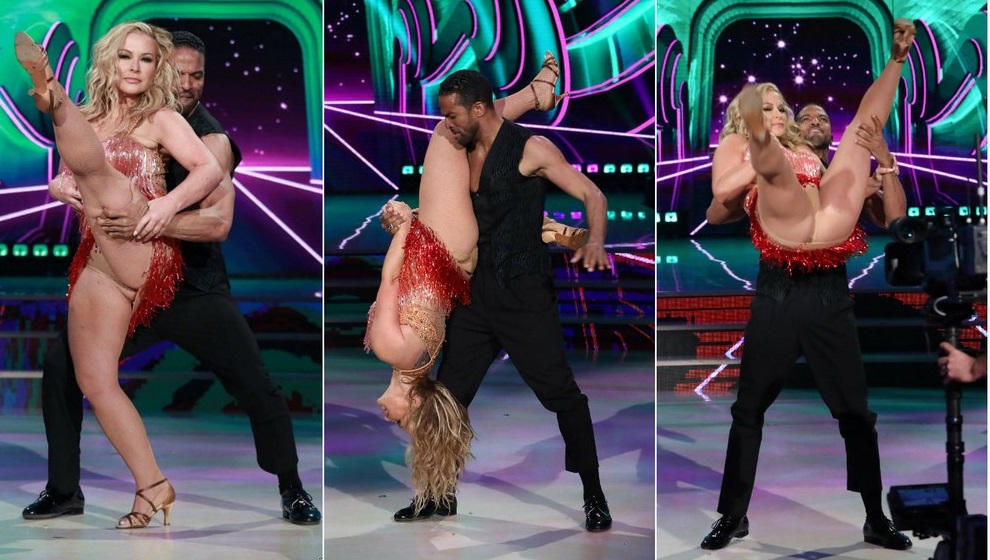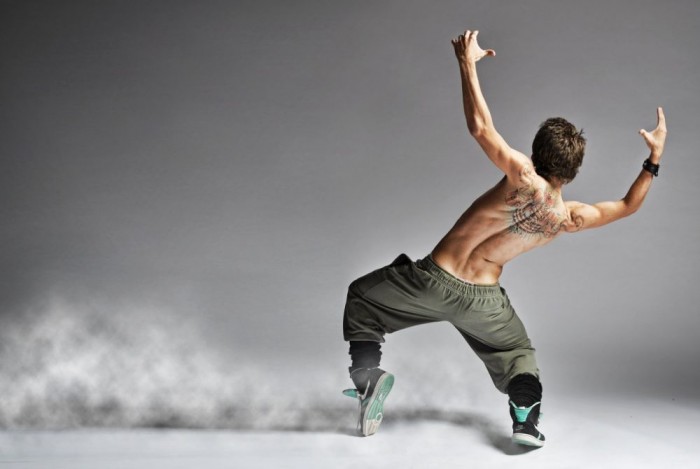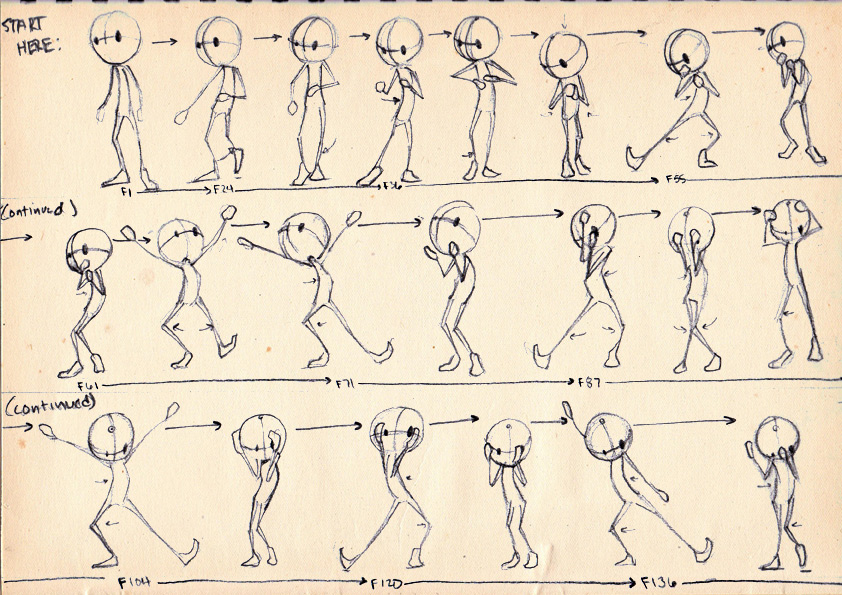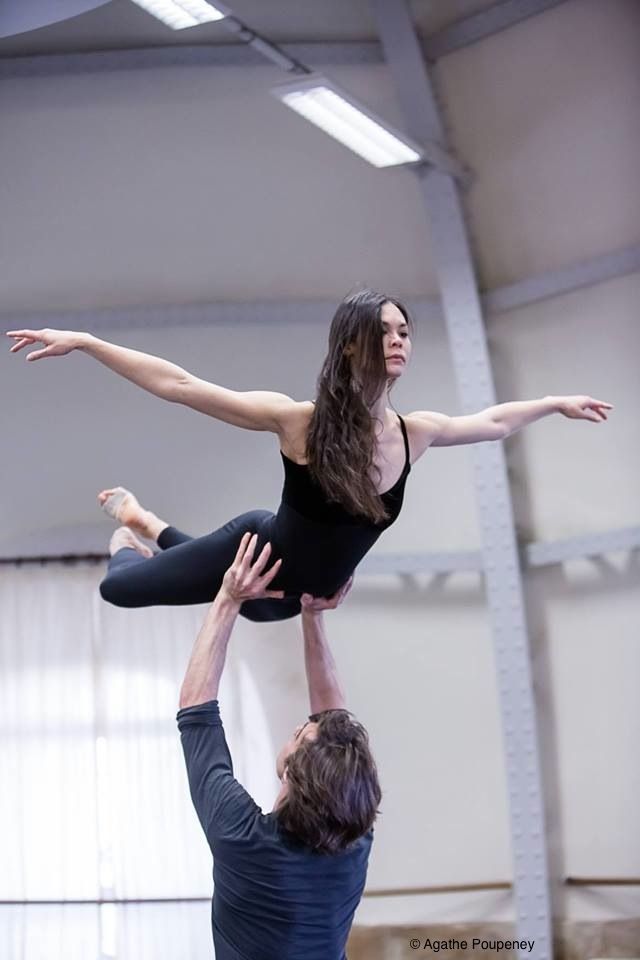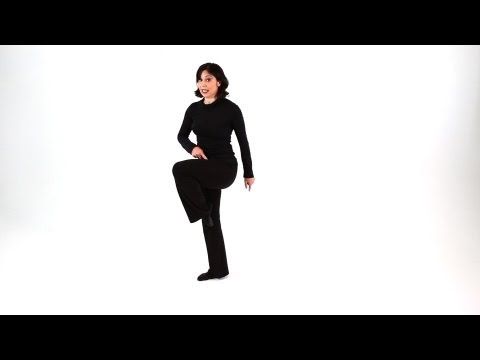How to twirl a woman while dancing
Super spinning tips and how to turn better in dance -
Lots of teachers (and other advanced dancers) get annoyed by non-teachers trying to teach people how to dance. I’m not going to do this, because if you want to dance well and improve it’s about getting good basic dance lessons, and practice.
But so many people struggle to spin and haven’t ever been taught. Here are the tips I was given via different teachers through the years. Tips from 13 years of ballet classes and 2.5 years of salsa where we were taught turning and spinning drills from a Guinness world record holder for spinning.
Hopefully some of these spinning tips will help you in both turning and spinning better as you dance.
1. Know the difference between a spin and a turn
A turn is stepping as you rotate, in modern jive that’s usually via a ‘return’ or travelling return. A spin should be on one foot and can be a free spin or aided by the leader.
2. Learn to spot
If you get dizzy when spinning, learning to spot is essential. It’s all about practice so that you’ll do it automatically. Essentially you’re leaving your eyes looking at one spot in front of you as your body turns, then when you can’t leave your head behind anymore, you whip your head around so your eyes are looking back at your spot again as the rest of your body follows. You can start slowly and build it up. This video is a simple beginner technique for starting out.
There’re plenty of YouTube tutorials and guidance on how to spot while spinning, and it does help reduce dizziness especially during multiple splns. I find spinning is easier than continuous turning in one direction because spotting is easier when you’re preparing to spin in one place.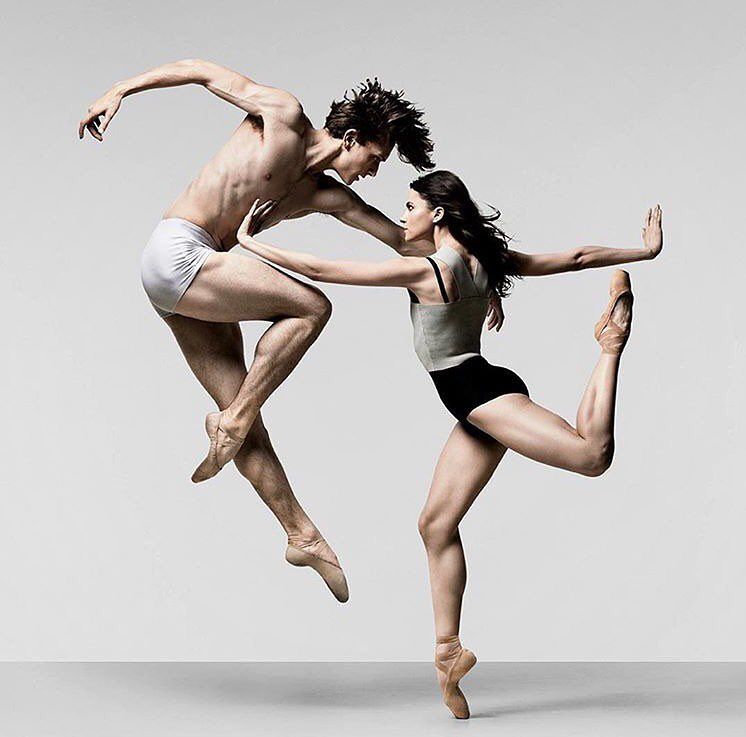
3. Spin and turn on one foot
To spin you need as small an area as possible on the floor. Using two feet will act as a brake and make you unable to turn.
4. Turn on the ball of your foot
I’m naughty at this because I do get lazy and tend to relax into my heel when I turn, but you should be turning on the ball of your foot. Your heel needs to only be slightly off the floor. But having your weight over the front of your foot will keep your body in the right place for turning without wobbling off in a different direction.
5. Don’t lift your spare foot up
When spinning, sometimes you see people lift their spare foot in the air (usually, bending at the knee, I presume it’s a natural reflex or they want to keep the spare foot out of the way). This will make you wobble and can also catch your partner or anyone else dancing closely. When doing a basic spin, you want to keep your spare foot next to your anchored foot, just above the floor. This keeps your body centred over your legs and should help keep you upright.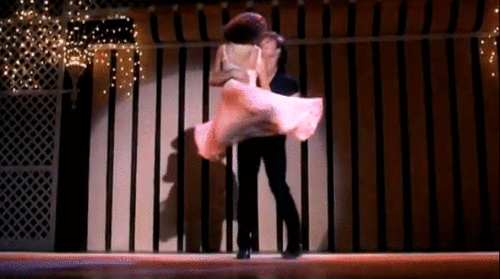 It’s much hard spinning with one leg raised.
It’s much hard spinning with one leg raised.
6. Think down into the ground, not up in the air
Lots of dancers lift up when trying to spin. This could be because they’ve done ballet in the past which is about pirouetting on your toes in a releve position. But it’s more likely that we often turn under the leader’s and our raised hand, so the body tends to follow upwards as well.
Yes, you need to straighten out your body and think open rather than tight and leaning over, but if you keep your knees slightly bent and think about drilling into the floor, you’ll be more balanced and grounded. It will certainly suit a more grounded dance than one like ballet which is much lighter and in the air. You’ll also move less when you’re spinning.
It’s hard to explain. But if you’ve done any latin dancing or salsa, where you need to feel the floor through your feet to get the right hip action, the grounding and turning into the floor rather than upwards, is the same sensation.
7. Have good posture
To spin well, you need to engage your core. You need to stay relaxed and not tense up your shoulders, pull your tummy in and tuck your bottom under.
Then keep your arms in a suitable position. The easiest position for a free spin is to bring your arms towards each other in front of you, at chest level, in an oval shape. Bringing one arm to join the first helps with impetous in a spin, but also keeps posture and position right. Oh and flailing arms isn’t a good look.
This clip shows a comfortable arm position and the posture needed (salsa – they do a lot more spin technique than modern jive! but you can still get tips on arm, body and foot position)
8.
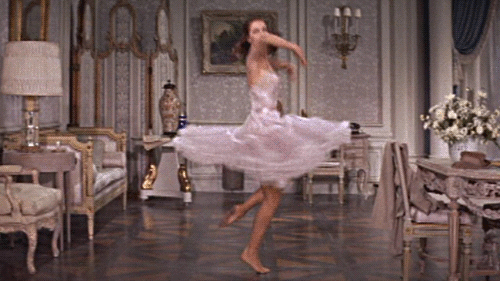 Don’t look down
Don’t look downIf you look down your weight balance will move and you’ll be more likely to fall. Look straight ahead for a steadier turn (or spot if you use that technique).
9. Don’t rush
So many people panic when they have to spin and try and go whooshing off really fast. But if you’re spinning or turning to music, you want to fill the beats you’re spinning on. If it’s a slow track, you’ll have longer to do one rotation. There’s no point whizzing round to find there’s still half the beat left to go.
10. Practice
It’s all about practice. Start with a single spin, and work up to multiple spins if you want. If you can do free spins yourself, it’s easier to then be led into aided multiple spins or turns. This clip shows the use of a clock method (admittedly for salsa spins with the prep, but the idea is the same for modern jive).
Tips for leaders
Most spinning is done by the follower, but these all apply to leaders as well.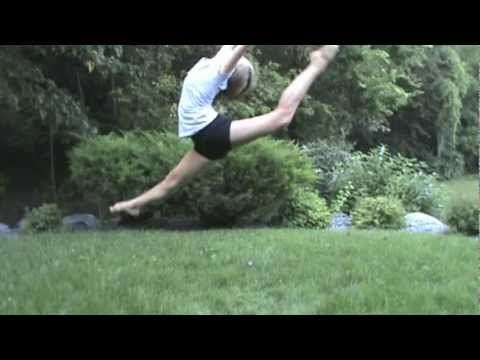 Plus if you’re prepping your partner for a spin, there’s things to be aware of.
Plus if you’re prepping your partner for a spin, there’s things to be aware of.
Don’t ever force the follower into a spin. You can prep for one (either raising the arm or prepping the follow for a free spin), but only they can do the spin.
Ensure your prep is accurate. If it’s a free spin, don’t prep the spin too far out from the follower’s centre, otherwise they will be off balance and the spin won’t work. If it’s an aided spin, raising your hand and the follower’s, to just above and in front of the follower’s head. Not really high above their head otherwise they’ll struggle to keep connection. And not below the top of their head otherwise they’ll have to duck which is a totally different move.
Own your spin
[bctt tweet=”The person spinning should always be the one in control of the spin ” username=”whatabout_dance”]
A final point to remember is that you don’t have to do multiple spins. Yes sometimes it’s nice to throw some in if the situation is right and the music calls for it.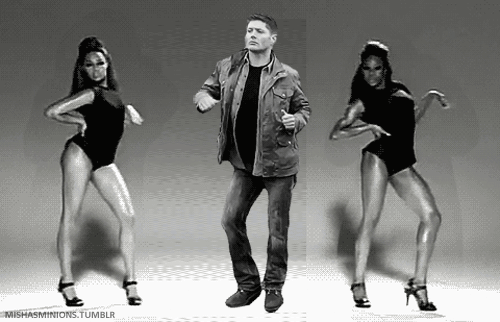 For example, I can do a double or triple (when I’ve been practising for a while), but I rarely do more than a single in freestyle. Because I’d rather have an immaculate single spin than try a multiple spin when the lead or prep doesn’t feel right, or the floor isn’t smooth enough. I’ve never had a leader moan that I’ve refused to do a double when he’s led that. I’ve usually had people compliment me on my spins.
For example, I can do a double or triple (when I’ve been practising for a while), but I rarely do more than a single in freestyle. Because I’d rather have an immaculate single spin than try a multiple spin when the lead or prep doesn’t feel right, or the floor isn’t smooth enough. I’ve never had a leader moan that I’ve refused to do a double when he’s led that. I’ve usually had people compliment me on my spins.
How do you get on with spinning? How were you taught?
Like this:
Like Loading...
Dances Categorized By Style & Type In Ballroom, Country & Swing Dance
Here you will find a brief description of several dances that you can learn here at Rhythms of Dance.
The Dances are categorized by style and type. (ie: Ballroom Country and Swing).
________________
Ballroom Standard vs Smooth Dances
________________
Ballroom
International Standard
Ballroom
American Smooth
________________
Ballroom Latin vs Rhythm Dances
________________
Ballroom
International Latin
Ballroom
American Rhythm
________________
Country
________________
Latino
________________
Other
________________
Swing
Ballroom Dance
Separated into two main schools: International and American.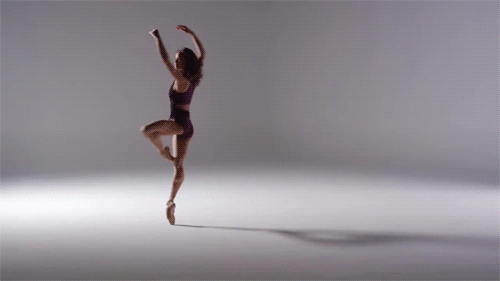 International Style was developed mainly in England and tends to be more standardized, while American Style is much flashier and has almost limitless variations. The added drama in American Style can be attributed to the influence of Hollywood in the early 20th century. Since the two distinct styles evolved side-by-side, each one has influenced the development of the other to varying degrees through the years. Each of the styles is further separated into 2 sub-categories: Standard and Latin in the International Style; Smooth and Rhythm in the American Style.
International Style was developed mainly in England and tends to be more standardized, while American Style is much flashier and has almost limitless variations. The added drama in American Style can be attributed to the influence of Hollywood in the early 20th century. Since the two distinct styles evolved side-by-side, each one has influenced the development of the other to varying degrees through the years. Each of the styles is further separated into 2 sub-categories: Standard and Latin in the International Style; Smooth and Rhythm in the American Style.
Not that one is necessarily easier to learn and master... In fact, most of the movement characteristics and a few of the figures are the same in both styles. Additionally, the goal in both styles is to get around the floor efficiently and with ease while maintaining the unique characteristics of each dance, smooth/standard, rhythm/Latin has relatively little overlap. While each category has cha cha, rumba and a swing dance, international has Samba and Paso Doble, while American has Bolero -- another, slower Rumba dance -- and Mambo. The Rumba dances are dissimilar, even in their basic counts, with steps on counts 1, 3, 4 for American and 2, 3, 4 for international. Most importantly, the hip motion differs: in American style, one steps onto a bent leg; in international style, onto a straight leg. [Henry Neeman]
The Rumba dances are dissimilar, even in their basic counts, with steps on counts 1, 3, 4 for American and 2, 3, 4 for international. Most importantly, the hip motion differs: in American style, one steps onto a bent leg; in international style, onto a straight leg. [Henry Neeman]
________________
Ballroom Standard & Smooth Dances
Standard & Smooth Dances are often thought of and referred to as Ballroom Dances. Foxtrot, Slow Waltz, Viennese Waltz, and Tango are found in both disciplines. Quickstep, long considered to be a Standard Dance, has recently enjoyed a Smooth makeover with the prevalence of shows such as Dancing with the Stars. The most notable difference between American Smooth and International Standard is that in Smooth you will see the partners release dance hold to perform a variety of underarm turns, and side-by-side or shadow figures. When dancing Standard, the dance hold is maintained throughout the entirety of the dance.
While American Smooth is flashier and generally speaking, more interesting to watch, International Standard retains a level of elegance that is unrivaled in the dance world.
Waltz (Ballroom International Standard)
Waltz is danced to music with three beats to the bar. This means that if a step is taken on each beat, then each bar starts with the opposite foot to that of the previous bar. This can be a source of great difficulty for the beginner, but when mastered, gives the dance a beautifully romantic lilt. Examples of Waltz music include Moon River(Andy Williams), Wonderful World of the Young(Various Artists), Unbelievable(Nat King Cole).
Tango (Ballroom International Standard)
Tango evolved from the Argentine Tango popular in the early 20th century. While the Argentine Tango was, and is, a very soft private dance, with visual emphasis on the leg movements... this character changed dramatically in Paris in the 1930's, where the dance was combined with the proud torso of the other ballroom dances, and given a staccato action. This moved the visual emphasis to the torso and head, a characteristic which remains to this day.
This moved the visual emphasis to the torso and head, a characteristic which remains to this day.
Viennese Waltz (Ballroom International Standard)
Viennese Waltz is a fast (180 beats per minute), simplified version of the waltz. In 1754 the first music for the actual "Waltzen" appeared in Germany. The word Waltz means "to revolve." As the name infers, the partners revolve around each other as they traverse the floor. This dance became hugely popular in Vienna in the early 1800's, from which it spread to England and later the Americas. It is consequently known today as the "Viennese Waltz." Examples of Viennese Waltz music include When Irish Eyes Are Smiling(Frank Patterson), Piano Man(Billy Joel), Chim Chimeree(Ray Conniff).
Foxtrot (Ballroom International Standard)
Foxtrot is danced to a slow-quick-quick rhythm to 4/4 time music. Social Foxtrots travel well across a large floor. The music is usually upbeat with an easy beat to follow, epitomized by Big Band music from the '40s.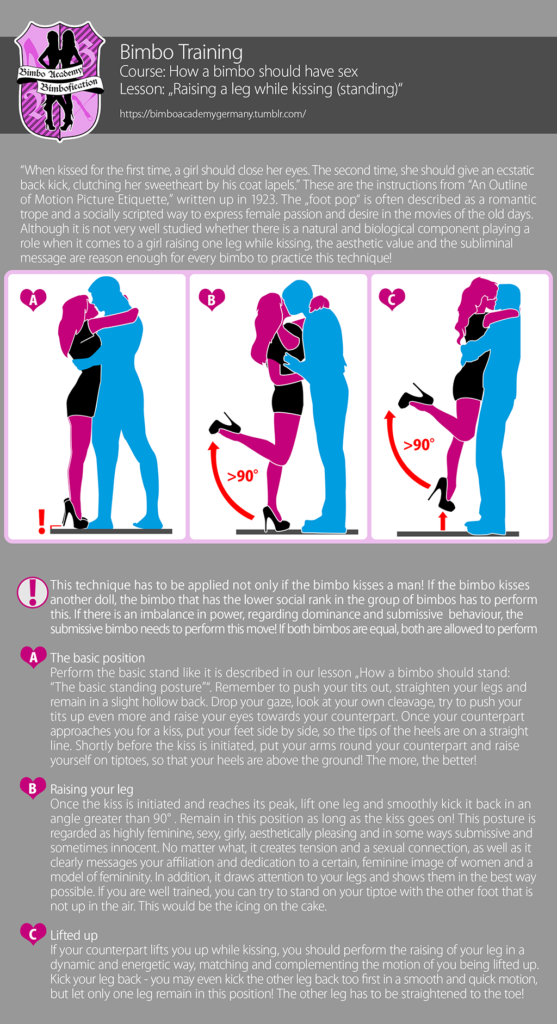 Examples of music you can dance Foxtrot to include It Had To Be You(Harry Connick Jr.), Singing In The Rain(Doris Day), Dream A Little Dream(Mamas and the Papas), I Want to be Loved by You(Sinead O'Connor). Performance-level foxtrots are characterized by smooth gliding movements.
Examples of music you can dance Foxtrot to include It Had To Be You(Harry Connick Jr.), Singing In The Rain(Doris Day), Dream A Little Dream(Mamas and the Papas), I Want to be Loved by You(Sinead O'Connor). Performance-level foxtrots are characterized by smooth gliding movements.
Quickstep (Ballroom International Standard)
Quickstep evolved when live bands in the 1920's played slow Foxtrot music too fast, and couples on the floor could not step fast enough to keep up with the music. It retains the walks, runs, chasses, and turns of the original Foxtrot, but incorporates athletic elements such as locks, hops, skips, and kicks. Quickstep is not played often at social dances in Portland, though you can often do Quickstep to Jive or Single Swing music. In this case dance floor etiquette calls for "Quicksteppers" to dance around the outer edges of the floor, while "Swingers" stick to the middle of the dance floor. Music you can Quickstep to includes Sing Sing Sing(Various Artists), It Don't Mean A Thing(Herman Brood), Puttin On The Ritz(Liza Minelli).
________________
Waltz (Ballroom American Smooth)
Waltz is the traditional Wedding Dance. The character is graceful with a swooping rise and fall. The timing is ONE - two - three with the "one" being the downbeat. The basic Waltz step is the box step, a sequence of six steps which, if you were to draw a line connecting all six, would form a box. Waltz is one of the first styles most dancers learn. Examples of Waltz music include You Light Up My Life(Whitney Houston), A Time For Us(Andy Williams), Come Away With Me(Norah Jones), Suddenly(Tony Bennett).
Tango (Ballroom American Smooth)
Tango is the most easily identifiable dance to observers, characterized by its unique music and dramatic poses. Its story is of a passionate love affair. After the First World War, the Tango was standardized and simplified. Contra body movement and the tango draw were introduced and remain with this dance today.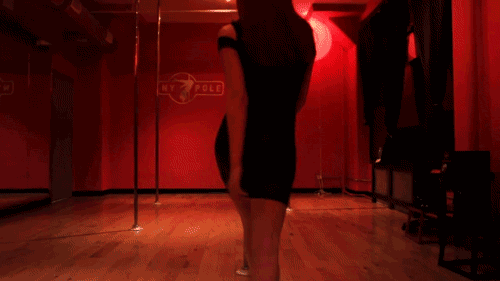 For newcomers attempting to perform the Tango, the main characteristic of the Tango is dancing with slightly bent knees. Tango is a great dance to learn if you want to impress your friends!
For newcomers attempting to perform the Tango, the main characteristic of the Tango is dancing with slightly bent knees. Tango is a great dance to learn if you want to impress your friends!
Foxtrot (Ballroom American Smooth)
Foxtrot is a great social dance often played at social dances, and easy to lead and follow. Traditionally danced to Big Band music, it is smooth and sexy. Its basic timing is slow-slow-quick-quick. The Foxtrot originated in 1914 in New York City by a vaudeville choreographer named Harry Fox. Audiences observed Mr. Fox's dancers slowly 'trotting' across the floor, and soon referred to his dance as the "Foxtrot." It is one of the most versatile of all the ballroom dances as it can be danced to a wide variety of music with varying tempos. Examples of Foxtrot music include Just In Time(Bobby Darrin), Witchcraft(Frank Sinatra), The Best is Yet To Come(Tony Bennett). If you only have time to learn one ballroom dance, we recommend the Foxtrot!
Viennese Waltz (Ballroom American Smooth)
Viennese Waltz is about twice the speed of Waltz, and features simple footwork with many twirls and voluminous arm expression. Viennese Waltz is the dance most often seen in movies depicting Ballroom Dancing. American Viennese Waltz is rarely done at social dances. Examples of Viennese Waltz music include Que Sera Sera(Doris Day), Thornbirds Theme(James Galway & Phil Coulter), Blue Danube(Various Artists).
Viennese Waltz is the dance most often seen in movies depicting Ballroom Dancing. American Viennese Waltz is rarely done at social dances. Examples of Viennese Waltz music include Que Sera Sera(Doris Day), Thornbirds Theme(James Galway & Phil Coulter), Blue Danube(Various Artists).
Peabody (Ballroom American Smooth)
Peabody feels like a cross between Foxtrot and Quickstep and is handy to dance with Foxtrot music that is too fast or Quickstep music that is too slow. It"s primarily a dance with long, gliding steps. Dancers use intricate quick steps set against a figure called the "open box". The song "I Could Have Danced All Night" from the "My Fair Lady" soundtrack is an example of Peabody music.
________________
Ballroom Latin & Rhythm Dance
International Latin consists of Cha-Cha, Rumba, Jive, Samba and Paso Doble. The Latin Cha-Cha and Rumba dances share the same origin as the American Cha-Cha and Rumba, although more of a classical influence can be seen as they evolved under the guidance of classical English and European dancers.
The Jive is best described as a faster version of Swing, with some striking stylistic differences due mainly to the speed of the music. Samba has its origins in Brazil, and also features a very distinct, percussive African influence. The Paso Doble originated in France and was later adopted by Spain. Paso Doble is traditionally danced to the music played in bullfights, and often characterizes the dramatic story of the matador, his cape and his life or death fight with the bull.
The American Rhythm grouping consists of Cha-Cha, Rumba, Swing, Mambo and Bolero. Four of these dances have their origins in Cuba, with the Rumba dating as far back as the 16th century. These dances and the corresponding music were greatly influenced by the African slaves in Cuba, and they tend to be more percussive and have a very earthy and hypnotic quality about them. The only exception to the Cuban origination is Swing which was born in the USA in the early 20th century. Swing dancing in America was greatly influenced by the African American dance community in the jazz clubs of Harlem, New York.
Of particular note is The Savoy Ballroom which featured world-class dancers such as Shorty George, Cab Calloway and Herbert White's Lindy-Hoppers.
Cha Cha Cha (Ballroom International Latin)
Cha-Cha is becoming more popular for wedding dance music reflecting our society's current fascination and romance with Latin culture. When the English dance teacher Pierre Lavelle visited Cuba in 1952, he realized that sometimes the Rumba was danced with extra beats. When he returned to Britain, he started teaching these steps as a separate dance called the Cha-Cha. We recommend all newcomers take the time to learn the Cha-Cha, as this dance is popular at social dances. Examples of Cha-Cha music you can dance to include Someday(Sugar Ray), All I Want To Do(Sheryl Crow), Lady Marmalade(Christina Aguilera), Let's Get Loud(J-Lo).
Samba (Ballroom International Latin)
Samba has figures with very different rhythms, like the Boto Fogo is danced to a "1 & a 2" quarter beat rhythm, whereas the Natural Rolls are danced to the simpler "1 2 &" half beat rhythm. It still retains a hip movement on the half beats between steps (the "Samba Tic"), a flat carriage of the torso, and is danced with the weight forward, substantially on the big toes. Examples of Samba music you can dance to include Bailamos(Julio Eglasias) and Shake Your Bon Bon(Ricky Martin).
It still retains a hip movement on the half beats between steps (the "Samba Tic"), a flat carriage of the torso, and is danced with the weight forward, substantially on the big toes. Examples of Samba music you can dance to include Bailamos(Julio Eglasias) and Shake Your Bon Bon(Ricky Martin).
Rumba (Ballroom International Latin)
Rumba's rural form in Cuba was described as a pantomime of barnyard animals. The maintenance of steady level shoulders while dancing was possibly derived from the way the slaves moved while carrying heavy burdens. The step still used today called the "Cucaracha" pantomimed stomping on cockroaches. The "Spot Turn" (also still used today) emulated walking around the rim of a cartwheel. The British dance teacher Pierre Lavelle visited Havana in 1947 and discovered that the Rumba was danced with the break step on beat 2 of the bar, rather than on beat 1 as in the American Rumba. He brought this back to Britain, together with the names of the many steps he learned from Pepe Rivera in Havana. These together with dancing the break on beat 2 rather than beat 1, have become part of the standard International Cuban Rumba. Examples of Rumba music you can dance to include Perhaps, Perhaps, Perhaps(Doris Day) and Take My Breath Away(Berlin)
These together with dancing the break on beat 2 rather than beat 1, have become part of the standard International Cuban Rumba. Examples of Rumba music you can dance to include Perhaps, Perhaps, Perhaps(Doris Day) and Take My Breath Away(Berlin)
Paso Doble (Ballroom International Latin)
Paso Doble is one of the most famous Spanish dances seen in competition. You will recognize the music of the most popular Paso Doble, the "Spanish Gypsy Dance", the moment it begins! This dance was first discovered in Mexico and made popular here in the U.S. during the 1920's. The gentleman in the dance represents the bullfighter while the lady's movement represents the bullfighter's red cloth also known as "Cappa," or sometimes the bull.
Jive (Ballroom International Latin)
Jive is usually the last dance in Latin competition, and is one of the hardest dances athletically to perform. It contains chasse steps, kicks and turns with the feet.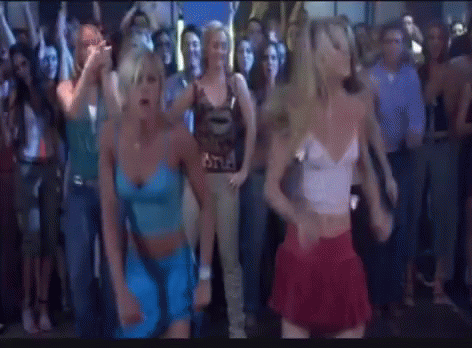 Often these are complicated, and partners must stay focused on the rhythm so as not to slip off-track! Partners are often judged on the energy that they give to its performance, in addition to the steps. The "moving center" of the dance, in Jive's case the handhold, should remain firm. Good coordination is essential, especially when executing sharp turns and difficult hand movements. Examples of Jive music include White I Like About You(The Romantics), Runaround Sue(Dion), Zoot Suit Riot(Cherry Poppin Daddies).
Often these are complicated, and partners must stay focused on the rhythm so as not to slip off-track! Partners are often judged on the energy that they give to its performance, in addition to the steps. The "moving center" of the dance, in Jive's case the handhold, should remain firm. Good coordination is essential, especially when executing sharp turns and difficult hand movements. Examples of Jive music include White I Like About You(The Romantics), Runaround Sue(Dion), Zoot Suit Riot(Cherry Poppin Daddies).
________________
Cha Cha (Ballroom American Rhythm)
Cha-Cha was created by replacing the "slow" in Rumba with a fast "side-together-side" (Cha-Cha-Cha). It is a very fun, fast, flirtatious dance! Originally known as Cha-Cha-Cha, its origins are in Cuban Mambo. It came to this country in the mid 1950's. The Cha-Cha is a spot dance characterized by dramatic body movements and a lot of energy. Cha-Cha shares many of the same steps as Mambo or Salsa with the Cha-Cha triple step thrown in. Songs you can Cha-Cha to include Gettin Jiggy Wit It(Will Smith), Smooth(Santana), Get The Party Started(Pink), Barbie Girl(Aqua).
Songs you can Cha-Cha to include Gettin Jiggy Wit It(Will Smith), Smooth(Santana), Get The Party Started(Pink), Barbie Girl(Aqua).
Rumba (Ballroom American Rhythm)
Rumba is a modified version of the "Son": a popular dance in middle class Cuba before World War II. Known as the "Dance of Love", Rumba is the simplest rhythm dance and is the dance from which most of the other Rhythm dances were derived. It was introduced in this country in the 1920's and 30's and is slow and rhythmical. Sometimes called the "Latin Waltz" or the "Waltz with a Wiggle", the Rumba is also a spot dance. It is danced in one spot with a slow-quick-quick timing and is characterized by sexy hip motion, turns, breaks and rolls. Many Waltz figures can be danced in the Rumba with Rumba timing, Cuban Motion, and Latin arm styling. Examples of Rumba music include My Cherie Amour(Jackson 5) and The Promise(When in Rome).
East Coast Swing (Ballroom American Rhythm)
Swing, sometimes referred to as "East Coast Swing," is the most common Ballroom Swing dance.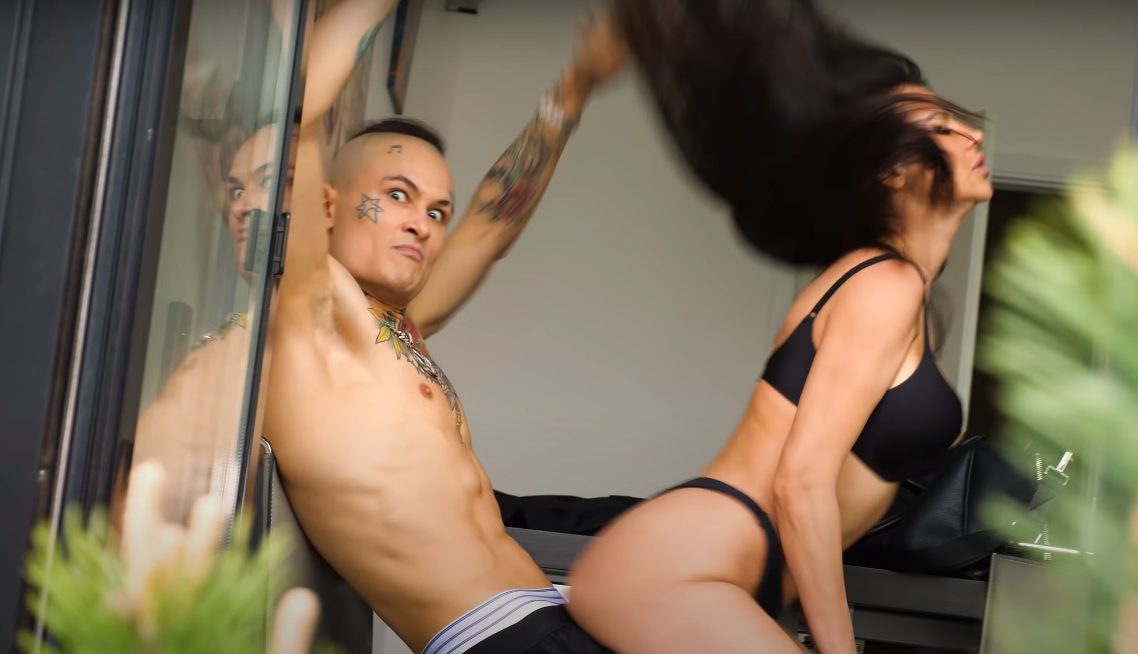 It has a bouncy character with a basic timing of triple-step, triple-step, rock-step. Despite its name, East Coast Swing is danced all over the country, and is the Swing many dancers learn first. It"s a versatile dance that we encourage all newcomers to learn. Examples of music you can Swing to include Sh'Boom(Embers) and Route 66(Big Joe Maher).
It has a bouncy character with a basic timing of triple-step, triple-step, rock-step. Despite its name, East Coast Swing is danced all over the country, and is the Swing many dancers learn first. It"s a versatile dance that we encourage all newcomers to learn. Examples of music you can Swing to include Sh'Boom(Embers) and Route 66(Big Joe Maher).
Bolero (Ballroom American Rhythm)
Bolero was originally a Spanish dance in 3/4 time. It later changed in Cuba into 2/4 time, then eventually into 4/4. It is now danced as a very slow type of Rumba rhythm. This is a left turning dance based on a "slip pivot" (a slip pivot is a rotation of the body on the ball of the supporting foot creating a pivot either forward or backward). Bolero has body rise only (no foot rise). This coupled with the slip pivot and slow dreamy music gives Bolero a very slow, smooth, powerful, romantic look and feeling. The foot patterns are similar to Rumba but have a very different feeling. An example of Bolero music is Celine Dion's "My Heart Will Go On."
An example of Bolero music is Celine Dion's "My Heart Will Go On."
Mambo (Ballroom American Rhythm)
Mambo has its origins in the religious ritual dances of West Africa. The word "Mambo" is the name of a voodoo priestess. The dance is similar to Salsa and spread to the United States from Haiti in 1948. There are three forms of Mambo: single, double, and triple. The triple has five(!) steps to a bar, and this is the version that evolved into the Cha-Cha. Basic Mambo timing is quick, quick, slow. Make sure to break on the "2" in Mambo, not the "1" as you would in Salsa dancing. Songs you can Mambo to include Mambo#5(Lou Bega) and Tequila(The Champs)
________________
Country Western Dances
Originating in the wild west and influenced by the Europeans, Country dance has evolved into a strong and recognized social avenue.
Triple Two Step
This is a romantic dance.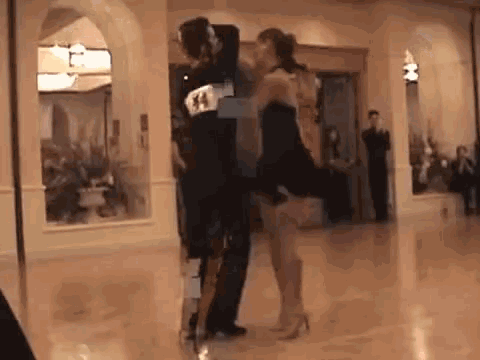 It would be like walking hand in hand through a park with your loved-one. It is used in Country competitions and its technique is more complex than Double Shuffle. It flows around the floor with a graceful sway.
It would be like walking hand in hand through a park with your loved-one. It is used in Country competitions and its technique is more complex than Double Shuffle. It flows around the floor with a graceful sway.
Polka
This is the fastest / liveliest dance of all the Country Dances. Its Country style differs from the German sytle Polka that some people may be familiar with. It has a lilt and rise but keeps grounded without skipping up off the floor.
Nightclub Two Step
Night Club Two Step is also called the bedroom dance. it is a smooth dance with a sway and counter sway motion like a flower moving back and forth in the wind. Night Club is considered the bedroom dance because it is supposed to have the look and feel of a romantic engagement in the bedroom with candle lights, rose petals and soft romantic music playing in the background.
Cha Cha
This dance is all about passion and being flirtatious.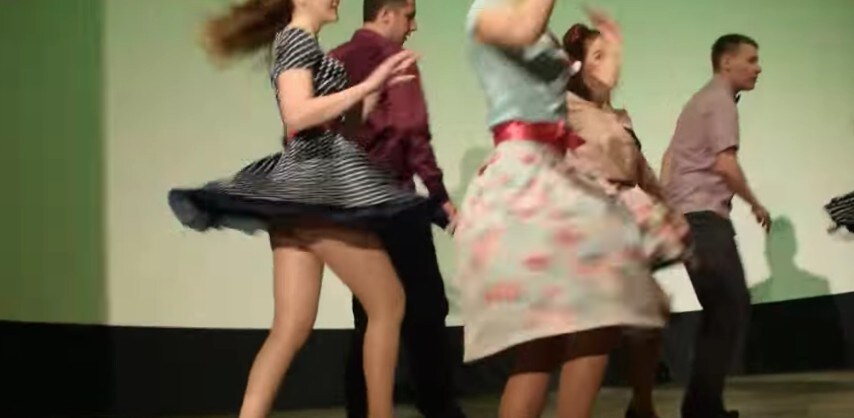 It is a rhythm, latin style dance and is danced at a slightly slower tempo within the Country style. It can be known within the country circuit as a Country Cha Cha and though it's style of dance also suits latin, it can be danced to many Top 40 hit songs. Both have Cuban motion.
It is a rhythm, latin style dance and is danced at a slightly slower tempo within the Country style. It can be known within the country circuit as a Country Cha Cha and though it's style of dance also suits latin, it can be danced to many Top 40 hit songs. Both have Cuban motion.
Waltz
Waltz is an elegant dance whether Country or Ballroom. The American style is danced with many open partner positions rather than all in a closed dance frame like the International style. This is a smooth dance and has rise and fall when done properly.
Two Step
Your classic Country dance. The proper way of Two-Stepping is unlike what you might see at the local bars. This dance feels like walking, it is not a smooth or rhythm style dance. It travels around the floor in a counter-clockwise direction even while the lady is turning.
East Coast Swing
A lively dance from the Swing/Jive family. East Coast Swing is the Country style of Swing/Jive.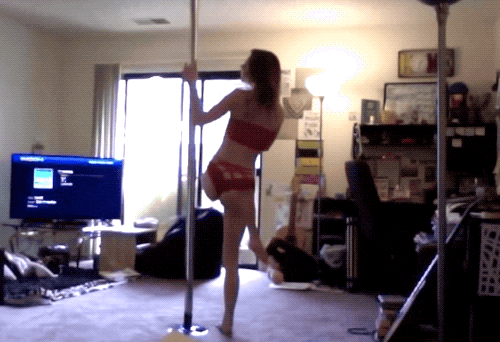 It is danced at a slightly slower tempo than Jive or American Swing. A fun dance that would suit a lot of music played at most functions you may attend.
It is danced at a slightly slower tempo than Jive or American Swing. A fun dance that would suit a lot of music played at most functions you may attend.
West Coast Swing
This dance will get you hooked! Not an easy dance to start with, but this dance is very versatile and works with pretty much any music style out there, It originates from Blues music but is now danced to Pop / Rock / Ballards and many more types of music. There is a big community of dancers that just focus on West Coast Swing. It differs because, unlike most dances where the male and female steps mirror each other, in this dance most steps do not.
Double Shuffle
This dance follows along the same lines as Two-Step, as you can use many of the same dance patterns. This dance though has a triple step instead of the slow, slow count. It"s a great alternative for live band music where dancing a Two-Step would be too slow.
Line Dance
Danced in a line to a variety of songs ranging in levels of difficulty from newcomer to advanced. Working on 1 wall, two wall or four wall configuration.
Working on 1 wall, two wall or four wall configuration.
Country Swing
Danced in the country bars around north america Country Swing is a mish mash of dances combining Two Step and Jive with a varietry of lifts and drops that the younger generation are drawn too.
________________
Latino Dances
Dances Influenced by African and South American music.
Salsa
Salsa is similar to Mambo in that both have a pattern of six steps danced over eight counts of music. The dances share many of the same moves. In Salsa, turns have become an important feature, so the overall look and feel are quite different from those of Mambo. Mambo moves generally forward and backward, whereas, Salsa has more of a side to side feel. While Mambo breaks on the "2" beat, Salsa breaks on the "1." Portland's "Satin and Latin" studio specializes in Casino Rueda: essentially salsa dancing in a group circle.
Merengue
Merengue is a Ballroom as well as a club dance that is done to really fast Latin music. It consists of very simple steps organized into sets of 8 to 2/4 music, and features a characteristic hip swing with graceful arm flourishes. Merengue choreography is as follows: Men and woman hold each other in a closed position and step to their side in what is known as "Paso de la Empalizada" or "Stick-Fence Step". They can then turn clockwise or counterclockwise. In Ballroom Merengue (Merengue de Sal"n) the couples never separates. There is also what is called Figure Merengue (Merengue de Figura) in which dancers make turns individually, but never let go of their partner's hands. The latter is most popular in the Portland area. Buster Poindexters "Hot Hot Hot" is an example of Merengue music.
Bachata
Another Latin Style Dance. With some Cuban motion between the couple as they dance close together (but not necessary) and a hip bump to the side after each set.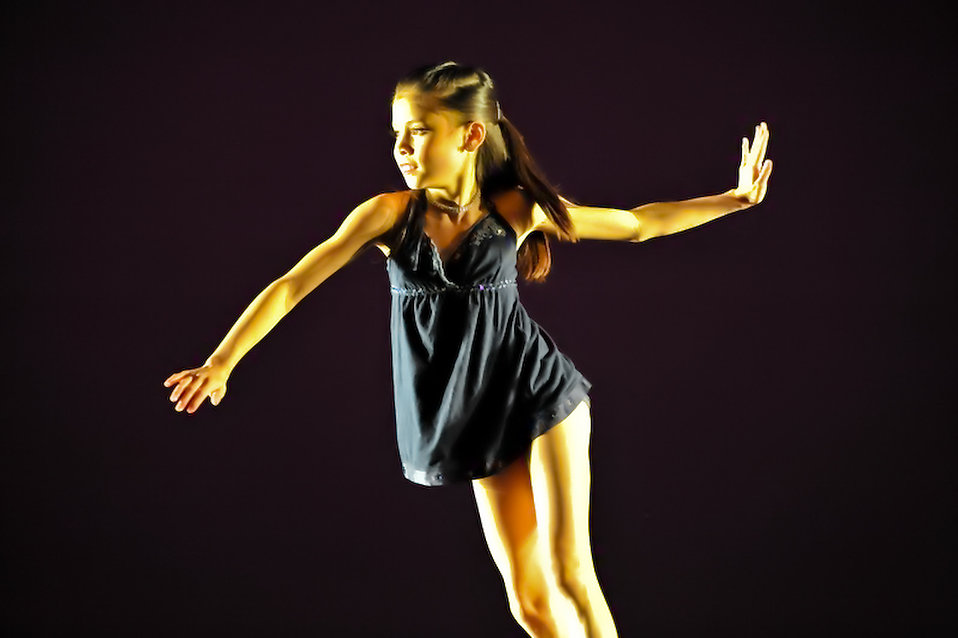
Zuke
A new dance emerging from a mixture of Latin style music. A sensual and romantic dance with a swing motion side to side.
Argentine Tango
Argentine Tango is exceptionally popular at the moment, especially in Portland! You've seen Argentine Tango in many hit films, including Al Pacino's "Scent of a Woman," Madonna's "Evita," and Arnold Schwarzenegger and Jamie Lee Curtis's "True Lies." Argentine Tango is the original Tango, not to be confused with its ballroom derivatives American Tango (with its dramatic arm postures) and International Tango (with its staccato body movement). It has an intimate, compact hold and features intricate footwork and a sensuous, passionate character. Tango was the first couple dance ever seen in Europe that involved improvisation. It was the arrival and popularity of Tango that really defines the beginning of couple dancing as we understand it.
________________
Other Dances
Standard & Smooth Dances are often thought of and referred to as Ballroom Dances.
Foxtrot, Slow Waltz, Viennese Waltz, and Tango are found in both disciplines. Quickstep, long considered to be a Standard Dance, has recently enjoyed a Smooth makeover with the prevalence of shows such as Dancing with the Stars. The most notable difference between American Smooth and International Standard is that in Smooth you will see the partners release dance hold to perform a variety of underarm turns, and side-by-side or shadow figures. When dancing Standard, the dance hold is maintained throughout the entirety of the dance. While American Smooth is flashier and generally speaking, more interesting to watch, International Standard retains a level of elegance that is unrivaled in the dance world.
Hustle
Hustle is today's version of Disco Dancing. It"s fast and rotary, with lots of spins, and is danced to popular music with a pulsing beat. Hustle styles vary widely in the Portland area. Most popular count is "and 1,2, 3" which can be difficult for beginners. Some dancers count and dance to "1,2, and 3" which is easier for beginners. Still others count and dance Hustle with six counts: "and 1,2,3 and 4,5,6." Any of these counts work well. This dance isn't very popular at public ballroom dances in Portland, but is fun to do. You can dance Hustle to most of the quintessential 70's anthems: I Will Survive(Gloria Gaynor), Le Freak(Chic), Stayin' Alive(BeeGee's).
Some dancers count and dance to "1,2, and 3" which is easier for beginners. Still others count and dance Hustle with six counts: "and 1,2,3 and 4,5,6." Any of these counts work well. This dance isn't very popular at public ballroom dances in Portland, but is fun to do. You can dance Hustle to most of the quintessential 70's anthems: I Will Survive(Gloria Gaynor), Le Freak(Chic), Stayin' Alive(BeeGee's).
Nightclub
Nightclub Two-Step is popular on the West Coast, but is almost unheard of on the East Coast. When we requested a Nightclub Two-Step at a dance in New York City, the DJ didn't know what music to play. It"s a beautiful dance with an eight beat basic step. Examples of songs you can dance this to include Sailing(Christopher Cross), When A Man Loves A Woman(Percy Sledge), Drive(The Cars), Coming Around Again(Carly Simon). Typically it"s danced in American-style dance position with a more relaxed hold than typical ballroom dances. The leader rocks back on his left foot, the follower on her right, for one beat.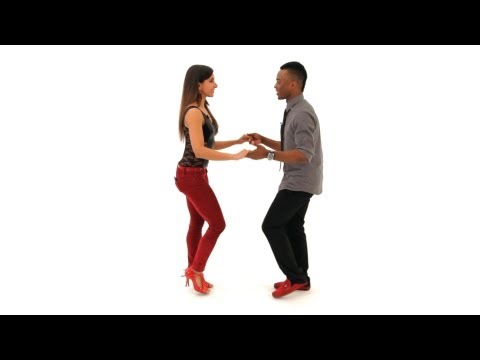 Then both partners replace weight on the second part of the first. On the next beat, the leader takes a step to the left and the follower to the right. Then both partners repeat, but on opposite feet (the man rocks back on his right foot and moves to the right). The "official" rhythm for the basic step is quick-quick slow, although some prefer to start on the slow, usually on beat two of the music. Other rhythms for Nightclub Two-Step are also possible.
Then both partners replace weight on the second part of the first. On the next beat, the leader takes a step to the left and the follower to the right. Then both partners repeat, but on opposite feet (the man rocks back on his right foot and moves to the right). The "official" rhythm for the basic step is quick-quick slow, although some prefer to start on the slow, usually on beat two of the music. Other rhythms for Nightclub Two-Step are also possible.
Slow Rhythm
Slow Rhythm, sometimes referred to as Slow Fox Trot is the "go to" dance for wedding dances. It is a very easy dance to learn and execute and has a variety of patterns and variations that make it suitable for a wide variety of song choices.
________________
Swing Dances
Swing Dance is a group of dances that developed with the swing style of jazz music in the 1920s-1950s, the origin of the dances predating popular "swing era" music.
The most well-known of these dances is the Lindy Hop, a fusion of jazz, tap, breakaway, and Charleston, which originated in Harlem in the early 1920s, but includes a number of other styles such as Balboa, Shag, West Coast Swing, and Boogie Woogie to name a few.[1] While the majority of swing dances began in African American communities as vernacular African American dances, some swing era dances such as West Coast Swing and the Balboa developed in white communities. Swing dance was not used as a blanket term for this group of dances until the latter half of the twentieth century. Historically, the term "Swing" referred to the style of Jazz music, which inspired the evolution of the dance.
East Coast Swing
A lively dance from the Swing/Jive family. East Coast Swing is the Country style of Swing/Jive. It is danced at a slightly slower tempo than Jive or American Swing. A fun dance that would suit a lot of music played at most functions you may attend.
West Coast Swing
West Coast Swing is popular on the West Coast of the United States, as its name implies. During our last 20 trips to New York City, where we receive our coaching, we have seen West Coast Swing growing in popularity there. West Coast Swing is a "slot dance" in which the partnership and figures revolve almost magnetically over a one-dimensional line on the floor. This "dancing in a slot" approach derives from San Diego dancehalls as far back as 1938. 50's rhythm and blues music is readily-identifiable West Coast Swing music. West Coast Swing is extremely different from Single Swing, Lindy, and other 'big-band'-type swing styles. We host West Coast Swing Dances every Sunday night at The Ballroom Dance Company, as well as the 3rd Friday of every month. Examples of West Coast Swing music include Stray Cat Strut(Stray Cats), California Girls(David Lee Roth), Morning Train(Sheena Easton).
Lindy Hop (Jitterbug)
Lindy Hop is the authentic Afro-Euro-American Swing dance. It is an unabashedly joyful dance, with a solid, flowing style that closely reflects its music -- from the late 20's hot Jazz to the early 40's Big Bands. Just as Jazz combines European and African musical origins, Lindy Hop draws on African and European dance traditions. The embracing hold and the turns are from Europe; the breakaway and solid earthy body posture are from Africa. The dance evolved along with the new swing music, based on earlier dances such as the Charleston and the Black Bottom, by black people in Harlem.
It is an unabashedly joyful dance, with a solid, flowing style that closely reflects its music -- from the late 20's hot Jazz to the early 40's Big Bands. Just as Jazz combines European and African musical origins, Lindy Hop draws on African and European dance traditions. The embracing hold and the turns are from Europe; the breakaway and solid earthy body posture are from Africa. The dance evolved along with the new swing music, based on earlier dances such as the Charleston and the Black Bottom, by black people in Harlem.
Balboa
The original Balboa dance is a form of swing dance that started as early as 1915 and gained in popularity in the 1930s and 1940s. It is danced primarily in close embrace, and is led with a full body connection. The art of Balboa is in the subtle communication between the lead and follow, including weight shifts, which most viewers cannot see. As a result, Balboa is considered more of a "dancer's dance" than a "spectator's dance".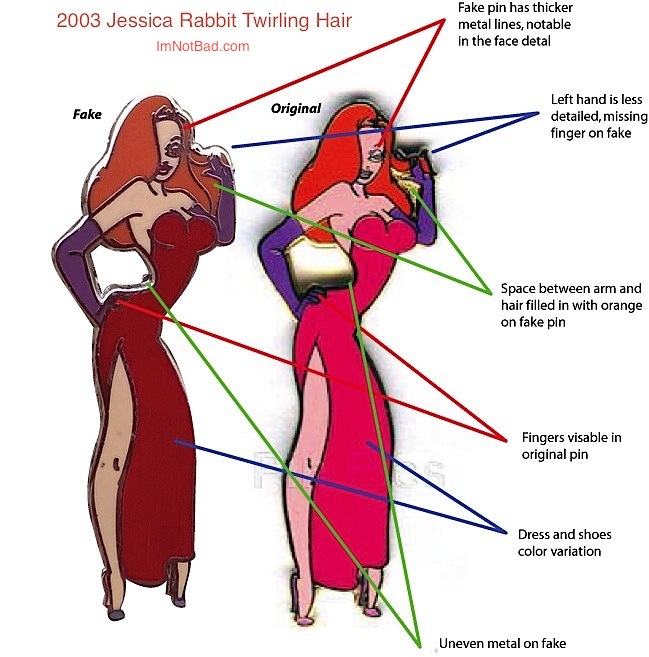 Its exact origins are obscure, especially as most of the original Balboa dancers have since died.
Its exact origins are obscure, especially as most of the original Balboa dancers have since died.
Carolina Shag (Shag)
The basic step in Carolina Shag is a six-count, eight-step pattern danced in a slot. The rhythm is similar to six-count Swing in that it is triple step, triple step, rock step or counted as "one-and-two, three-and-four, five-six". There are eight shag dance steps. The "one-and-two" and "three-and-four" steps should take about as much time to complete as the "five-six."
________________
We offer private lessons for individuals of ALL dancing levels who are eager to learn and improve their dancing skills in a one-on-one teaching environment. This is the best way to become the dancer you want to be as quickly as possible! Whether you're a total beginner or a national competitor, we individually tailor each lesson to each student - reducing weaknesses and developing strengths.
Please contact us for more information.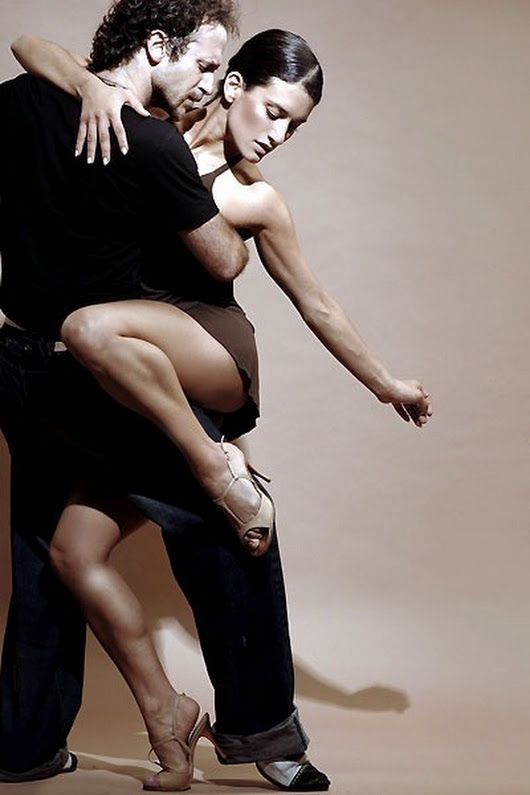
For more information please Cindy or call: (403) 228-5765
15 dance moves that make women want to have sex
Style
close
100%
On the International Dance Day, Gazeta.Ru finds out how a man should move in order to awaken the most daring desires in women.
British scientists... no, this time it's really British, no kidding, from Northumbria University (Northumbria University) finally did something useful and carried out a massive research study on what a woman notices when she watches a man dance and how it makes her feel.
In order not to distract the ladies with the appearance of a man, what he is wearing, how he is cut, how he smells and how he looks at her (of course, British scientists have separate scientific studies about all this), the experimental men were forced to dance for hours to the same music, having previously dressed in special costumes that were used during the filming of the film "Avatar". The clothes stitched with sensors caught all male movements, thanks to which a 3D model of a dancer without taste, without color, without smell was subsequently created. All facial features and features of the figure were erased. There is only one solid body left.
The clothes stitched with sensors caught all male movements, thanks to which a 3D model of a dancer without taste, without color, without smell was subsequently created. All facial features and features of the figure were erased. There is only one solid body left.
The clip of these dubious dances was then shown to women of various ages, incomes, and beliefs, as well as to a control group of women who were not told at all what the purpose of the study was. In general, the only thing the ladies had in common was gender and traditional sexual orientation.
And what turned out? It turns out that the vast majority of ladies react at the sight of men's dances to exactly the same thing. Exactly the same movements women find sexually attractive or repulsive. The topic of the study, and in fact it, of course, sounds like this: “How to behave so that women want to have sex with you”, for obvious reasons, turned out to be so important that several more elite universities joined the scientific search for an answer to this question, including Columbia University in the USA.
So, this is what the scientists found out:
1. Women love it when a man wiggles his hips, spreading them wider
with which the man is dancing. The faster the better. Moreover, the speed of the melody does not matter
4. Women like sudden movements. They associate them with passion
5. Women like smooth movements less
For some reason, they especially pay attention to how the right male knee moves. For special satisfaction, the knee should move quickly
7. And the knees should be bent almost all the time
8. The less the man moves his arms, the better
0005
10. And the hands should not be tense - this is very repulsive to a woman
11. There should be as many neck movements as possible
A man should look confident
14. But the main thing is that a man should just dance
15. It doesn't matter how. Although no, sorry, correlation, scientists between these facts have not yet been revealed, women, to spite them, still believe that men who dance are more skillfully engaged in sex than those who refuse to do so.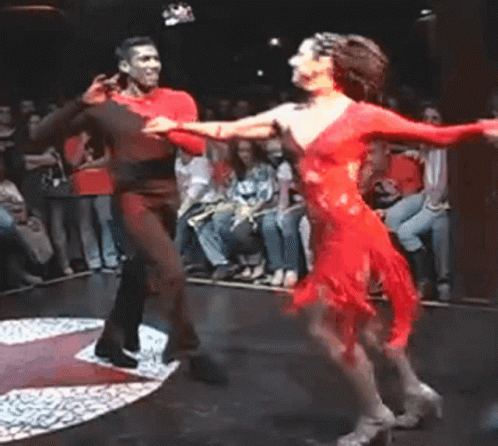 So dance to spite everyone!
So dance to spite everyone!
Subscribe to Gazeta.Ru in News, Zen and Telegram.
To report a bug, select the text and press Ctrl+Enter
News
Zen
Telegram
Picture of the day
Russian military operation in Ukraine. Day 293
Online broadcast of the special military operation in Ukraine — Day 293
"Very tired." Arestovich spoke about the state of Zelensky
Advisor to the Head of the Office of the President of Ukraine Arestovich spoke about Zelensky's extreme fatigue
"Out of the question." The Kremlin responded to Zelensky's proposal to withdraw troops
Peskov said that the withdrawal of Russian troops from the special operation zone in Ukraine is impossible
The US envoy warned of a "very real" arms shortage in NATO countries
The State Duma approved the draft law on the protection of the Russian language from the dominance of foreign words
The British Foreign Office plans to use the accounts of Russian businessmen to restore Ukraine
Kazakhstan plans to introduce liability for discrediting the army during the "special period"
News and materials
Ronaldo in a new post described three aspects of reality in three words
Rossiya Airlines will open regular direct flights between St. Petersburg and Dubai
Petersburg and Dubai
Agata Muceniece spoke about loneliness
In the Russian Federation, it was proposed to assign researchers a special status at the legislative level
Former UFC champion Cejudo criticized the decision of the judges on the fight between Ankalaev and Blachowicz
The UN predicted a record growth in trade in the world in the amount of $32 trillion by the end of the year
Artsakh information headquarters: Azerbaijan cut off gas supply to Nagorno-Karabakh
Ryabkov: Moscow will respond to the forced departure of Russian diplomats from the USA
The coach of Morocco Regragi ironically reacted to the criticism of the team's style of play
Russians were deprived of cash prizes in the competition of the most popular blogger in the world
Szijjártó: EU energy ministers disagree on gas price ceiling
Ryabkov: Russia proposes to the United States to set a ceiling on the number of personnel in embassies
The EC will allocate more than €10 million to Estonia to help Ukrainian refugees
Netflix will make a film adaptation of the anime "My Hero Academia"
Ryabkov: The United States has turned the work of diplomats into an instrument of political pressure on the Russian Federation
Ovechkin spoke about how sons react to the pursuit of the Gretzky record
Khabib demanded that Makhachev defend the UFC 9 title six times0005
The Libyan authorities demanded an explanation from the United States regarding the extradition of the person involved in the Lockerbie case
All news
"We are for nuclear deterrence.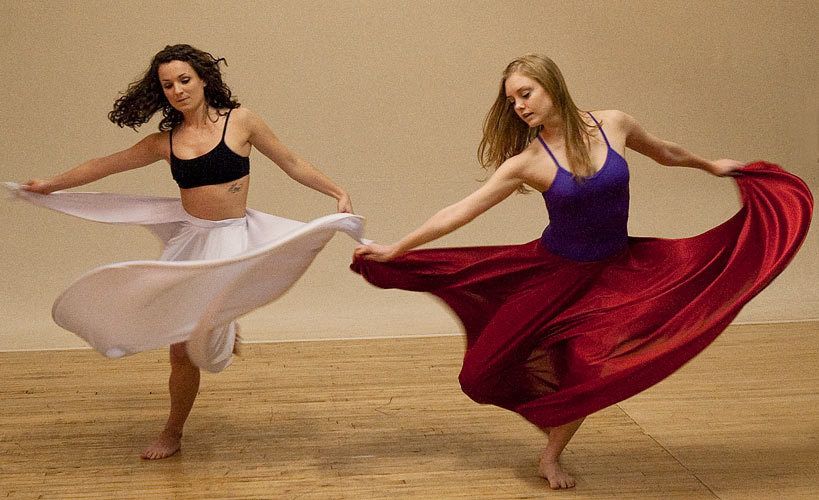 " How a mock-up rocket reached the US Embassy in Moscow
" How a mock-up rocket reached the US Embassy in Moscow
Traffic police stopped a car in Moscow with a mock-up of the Sarmat rocket and the inscription "To Washington"
"Transition to the Air Force of Tomorrow". How American hypersound is catching up with Russian
US Air Force conducted the first successful launch of a prototype hypersonic missile
"Her Truth": what a drama about the journalists who exposed Harvey Weinstein turned out to be
Review of the drama "Her Truth" with Carey Mulligan and Zoe Kazan about the exposure of Harvey Weinstein
"It was self-defense." A pro-Russian blogger was detained in Australia for a fight with an old man0005
"There will be plenty of blood and action.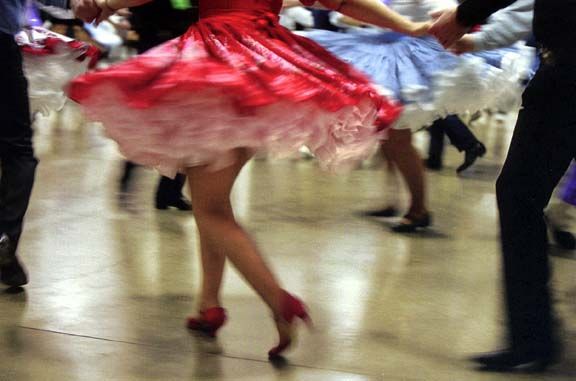 " Dmitry Lysenkov - about the second season of "Vampires of the Middle Strip"
" Dmitry Lysenkov - about the second season of "Vampires of the Middle Strip"
Actor Lysenkov described the taste of blood from the filming of "Vampires of the Middle Strip"
How Russia will respond to the "price ceiling". Putin's decree is almost ready
Vedomosti: the authorities agreed on a mechanism for Russia's opposition to the oil price ceiling
Kurt Cobain, Freddie Mercury and Princess Diana. What dead celebrities would look like now0005
From Twin Peaks to Stalingrad. Angelo Badalamenti dies
"The King of Respiratory Infections": why you can't carry the flu on your feet
Infectionist Konovalov explained who is dangerous for swine flu
"Ukraine needs modern tanks. " Zelensky named three steps to achieve peace
" Zelensky named three steps to achieve peace
Zelensky at the G7 summit named three steps that will lead to peace in Ukraine
Test: Guess if it's true or a myth - what they say about masturbation
Does self-satisfaction harm the psyche and sexual life?
"The cult of greenery still exists today": why it is dangerous to treat chickenpox with dye
Surgeon Sergienko: today greenery is used not for treatment, but for marking the surgical field 08:10
"We will isolate the theater of operations." What did they say in Kyiv about the blowing up of the bridge in Melitopol
As a result of explosions in Melitopol, an automobile bridge was damaged
5 TikTok dance challenges you'll want to repeat
September 18, 2020 Reno5 Inspiration
Selected and reproduced cool dances performed by tiktokers around the world. It turned out to be not so difficult. You can do it too!
It turned out to be not so difficult. You can do it too!
Masha Rubtsova
Actress of the Sovremennik Theatre. Helped us deal with challenges.
1. Like That Challenge
- Difficulty: 1 out of 5.
A short and fairly easy dance that will not cause any difficulty even if you have never done choreography. It can be worked out even in the bathroom in front of the mirror. The challenge song is a hit by rapper Doja Cat. Tiktokers joke that she doesn't have any tracks left that wouldn't go viral because of dancing on TikTok. By the way, this bunch will easily fall on other music. So if you usually do not know where to put yourself on the dance floor, the challenge will help you relax and start dancing.
@ayiram21##1♬ Just like that come my way - jordanaudiož
Tutorial from Masha:
- Try to get to the beginning of the music - it will be easier to follow the rhythm;
- make a wave under the right hand, click with the fingers, then wave under the left hand and click;
- bend back in a wave, and then twist your arms in front of you;
- swing forward with your hands in front of you and immediately another swing on your right leg;
- stretch your right arm forward and point your finger at the camera or at the person you are dancing for, circle your arm around your head;
- stretch both hands forward one by one, call to yourself with your right palm, sitting down.
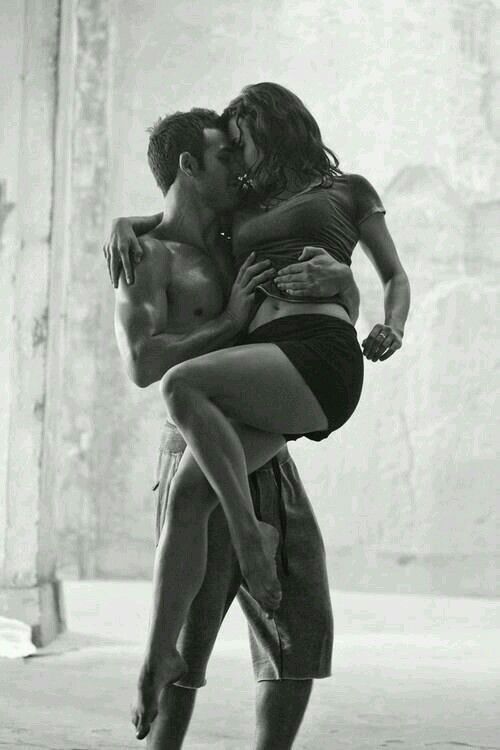
2nd Don't Start Now Challenge
- Difficulty: 2 out of 5.
Learn this link to add an 80's vibe to your dancing. She is uncomplicated. The main thing is to roll a wave with your body, point to the clock and effectively leave in the style of Michael Jackson. It is performed to the song of the English singer Dua Lipa - a great lover of the charm of those times. This challenge was first recorded by a Tiktoker named Hannah Kaye Balanay, and then her dance was repeated by 3.8 million people around the world.
@ayiram21##2♬ Don’t Start Now — Dua Lipa
Tutorial from Masha:
- Dance in place and emphasize by straightening your half-bent arms down and pointing your palms to the floor;
- clench your hands into fists, bend your knees and rock your hips. Move your arms along with your pelvis;
- keep swinging your hips, release two fingers from each fist;
- wave to the right, clap your hands and open your arms;
- dance on soft knees (as at the beginning of the dance), put your right hand behind your head, and then smoothly straighten it;
- place your fists on your pelvic bones, then tap your fingers on your wrist as if telling the time;
- clench your hands into fists again, bend your knees and swing your hips from side to side;
- make a small circle with your shoulder, turn sideways and moonwalk out of the frame.

3. Supalonely Challenge
- Difficulty: 3 out of 5.
Funny dance to the sad song of New Zealand singer BENEE. If you do not listen to the text, you will not even suspect that the content is rather depressing by the cheerful rhythm. In general, if you get bored alone - here's an activity for the evening. A bunch can be learned pretty quickly: tap on an imaginary drum, spread your arms, pretend that you are drinking from a bottle - you're done. And smile! How did the tiktoker with the nickname zoifishh, who launched the challenge.
@ayiram21##3♬ Supalonely (feat. Gus Dapperton) — BENEE
Tutorial from Masha:
- Wait for the right beat, bring the clenched fist of your left hand to your right shoulder and swing your shoulder forward, pretending to pull by his hand;
- turn your head to the left, punch an imaginary wall on the right;
- stretch your left arm to the right and then up.
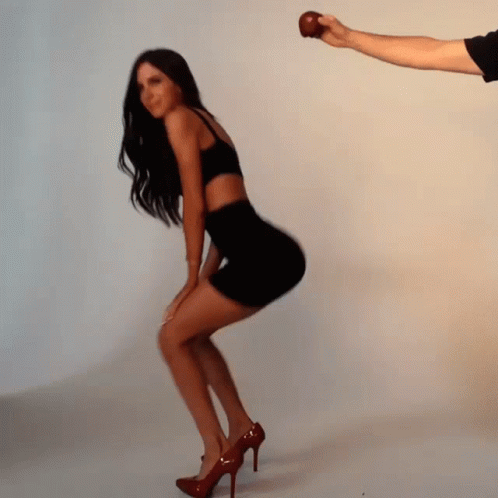 Emphasize head to the left along with the pelvis, then a small circle with the hand to the left;
Emphasize head to the left along with the pelvis, then a small circle with the hand to the left; - Raise your arms in front of you as if holding a camera. "Take a photo" in front of you and to the right;
- cross your arms over your chest and straighten them down twice;
- make a “table” out of the hands: the right hand under the left elbow, and the left hand under the chin;
- strike with the left hand on the left pelvic bone, with the right hand on the right;
- lunge forward on half-toes on bent knees, and at the same time make a wave forward with your hands;
- circle back with your right hand and step in place, then with your left hand and step in place;
- fold your hands into a “bottle” and pretend to drink, making a wave in both directions;
- take two steps in place, twist your finger at your temple and straighten both arms up.
4. Kill This Love Challenge
- Difficulty: 4 out of 5.

Suitable for fans of K-pop and fast movements. The challenge is inspired by a song by the Korean band BLACKPINK. The performer will need some choreographic skills. Or it just takes you a little more time to learn. But you can spin from the heart and throw out energy. The dance looks great when performed alone or with a group of friends. The music is very dynamic - the best thing is if a house party begins to fade.
@ayiram21##4♬ Kill This Love - BLACKPINK
Tutorial from Masha:
- Bend your left arm - the elbow points to the left, the fist is at the shoulder. Take a step back with your right foot and take your left hand back. Do the same on the other side;
- turn to your left side, pretend that you are holding a machine gun from which you are shooting. Simultaneously with the “shots”, do a slow wave back;
- put your foot on the toe and rotate the foot in different directions, “dancing” with bent arms near the body;
- straighten up sharply, turning to face the camera: hands behind your head, feet together.
 Take your right hand up diagonally, and put the other on your belt;
Take your right hand up diagonally, and put the other on your belt; - put your left leg out to the side, then put your left hand on your thigh and sit down on your left knee;
- make a circle above your head with your right hand, turn your right side in the same position, touch your left shoulder with your right hand;
- make three circles with your arm above your head and work your hip up. With two hands make a circle through the bottom, and then a point with the hands and thigh two times;
- step with your left foot, focus down with your hand. Take your elbows back as at the beginning of the dance;
- gather your legs and put your hands in a frame, and then spread them apart. Make two waves with your body, lower your right fist to the floor.
5. WAP Challenge
- Difficulty: 5 out of 5.
This is the bomb. Complicated, but very effective bunch. If you are doing well with stretching, you can impress everyone. Practice the dance in knee pads if you don't want to get hurt. Some inexperienced dancers ended up in the hospital with knee injuries due to bad landings. WAP was created by professional choreographer Brian Esperon from the small Pacific island of Guam. This dance has high batmans, twine, twerk - a full arsenal of dance and gymnastic elements.
Practice the dance in knee pads if you don't want to get hurt. Some inexperienced dancers ended up in the hospital with knee injuries due to bad landings. WAP was created by professional choreographer Brian Esperon from the small Pacific island of Guam. This dance has high batmans, twine, twerk - a full arsenal of dance and gymnastic elements.
@ayiram21##5♬ WAP(feat. Megan Thee Stallion) - Cardi B
Tutorial from Masha:
- Jump in place with a leg lift: bent left knee to the shoulder, and then right straight up;
- sit in a grand plié and open your arms. Get on all fours, but keep your knees on the floor. Turn your head and pelvis to the same side;
- straighten up for a second: push your pelvis forward, take your arms and head back, bend your back. Then kneel down again in the "cat";
- lie down on your stomach through a soft wave: the right knee is in the “frog”, the left leg is straight.
 Hit the floor with your right hand and at the same moment lift off the floor and lower your buttocks to the beat;
Hit the floor with your right hand and at the same moment lift off the floor and lower your buttocks to the beat; - turn over your left shoulder onto your back, roll, opening your legs into a cross split. Get back into the "cat";
- walk three steps on your knees, alternately arching your back up and down;
- stretch your knees, make a big circle with your right foot and sit on the longitudinal split. Raise and lower your buttocks to the beat of the music.
Stay fit and connected with the OPPO Watch. They have 2 powerful processors, a bright AMOLED display, 1 GB of RAM and 8 GB of internal memory, Bluetooth, Wi-Fi and NFC modules. And more than 90 training modes, including those designed specifically for ORRO. Train cooler with music, you can listen to it in streaming services or download tracks to the memory of the watch. If you want to enjoy clear sound, the OPPO ENCO W51 Wireless Headphones will come in handy. 8 mm speakers, an additional microphone for high-quality voice transmission and a stable connection will make listening to music and talking on the phone as comfortable as possible.
